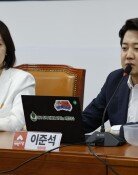Popularity of high-tech majors falls behind medical, science, and engineering
Popularity of high-tech majors falls behind medical, science, and engineering
Posted September. 19, 2023 08:46,
Updated September. 19, 2023 08:46
In 2024, the average competition ratio for early admission to medical schools among the top 10 universities stands at 46 to 1, marking an increase from the previous year. Notably, Inha University's College of Medicine boasts the highest competition ratio, an astonishing 661 to 1. Conversely, high-tech majors such as semiconductor studies had an average competition ratio of 16.5 to 1 among seven major universities. This ratio was lower than the average competition ratio for natural science majors, which stood at 19.2 to 1, excluding medical majors at the same universities. As medical schools continue attracting talent like a black hole, the talent supply system for basic science and high-tech fields appears unstable.
The excessive preference for medical schools in early admissions serves as a warning sign for a potential mass exodus to medical programs once acceptance results are announced this year. In the previous year's college admission examination, three out of every ten students accepted through the Korean SAT at the so-called 'SKY' universities ultimately declined their enrollment offers. Among those who were initially accepted into semiconductor-related departments at Yonsei University and Hanyang University during the first round, the majority eventually withdrew, with many opting for medical schools. Despite the government's commitment to nurturing a semiconductor workforce as a national priority, the issue of high-tech majors being undervalued remains unresolved. Over the past five years, five state-supported universities specializing in science and technology, including KAIST, have witnessed 1,105 students dropping out, with a substantial portion of them possibly transitioning to medical schools.
The imbalance in talent development caused by the medical school boom negatively affects national competitiveness. According to government estimates, we will require approximately 320,000 professionals in high-tech sectors such as semiconductor technology, display manufacturing, battery production, and the bio-industry over the next decade. However, highly skilled Koreans are increasingly being lured by overseas companies, and the younger generation in Korea, who will succeed them, shows little inclination towards high-tech fields. Even within medical schools, there is a severe imbalance among majors. In a world where a single reputable pharmaceutical company can double a country's economic growth rate, medical science is often neglected in favor of clinical patient care, with dermatology and plastic surgery being the most sought-after specialties due to their profit potential.
While the government hopes that increasing the number of medical school slots will alleviate the ongoing medical school boom, it could inadvertently attract even more students to the field. Consider this: even if you attain a Ph.D. from a prestigious university in Seoul, complete a postdoctoral program at a foreign university, and secure a position as a semiconductor researcher at a major Korean corporation, it remains challenging to earn more than 100 million won after taxes. That's less than half of what a doctor earns. While doctors possess licenses, STEM majors often feel even more constrained when they retire in their early 50s. We must provide better compensation for talented individuals in basic science and high-tech fields while expanding research infrastructure. Our country has no promising future if all of our brightest minds gravitate towards aesthetic medicine.







